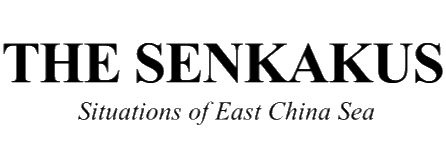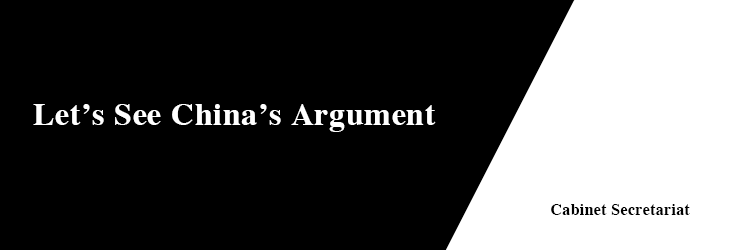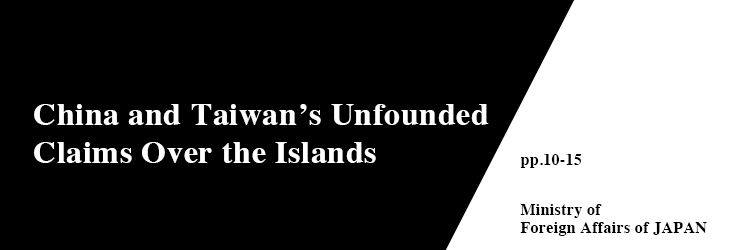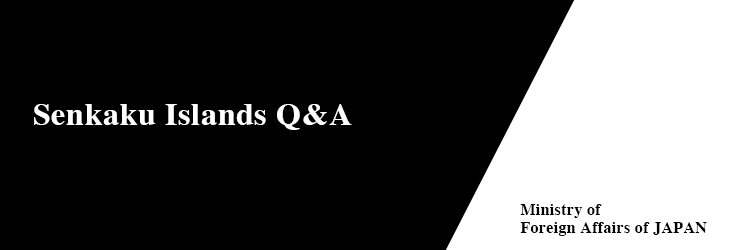About SENKAKU Islands

- Hisotry
-
In December 1971, the People’s Republic of China (China) stated for the first time that China has historically held the Senkaku Islands since the 14th Century. China’s claims are based on its unique interpretation of history, and not supported by any grounds based on international law. China has made repeated incursions into Japan’s territorial waters around the Senkaku Islands. The frequency of the incursions has sharply risen since 2012.
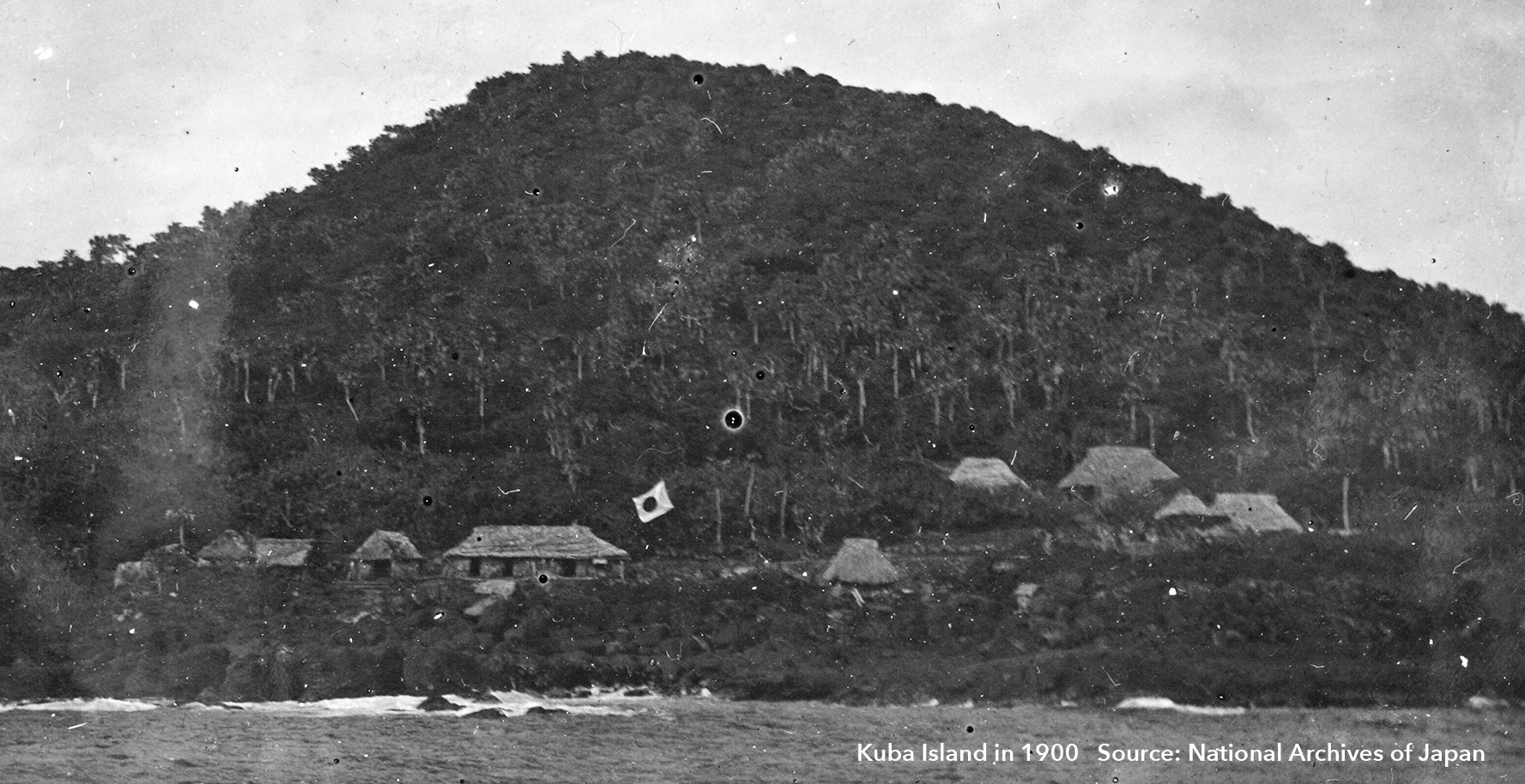
- The period before Okinawa Prefecture conducted the investigation on the Senkaku Islands in 1885
-
(1) The Senkaku Islands known to the Ryukyu people
The Ryukyu people have had specific knowledge of the Senkaku Islands from the past. more (external link)
- From the time of the investigation conducted by Okinawa Prefecture, until the incorporation of the Senkaku Islands into Japan’s territory (1885 to 1895)
-
(1) Investigation of the Senkaku Islands by Okinawa Prefecture, and proposal to the Government for incorporation
In 1885, the Okinawa Prefectural Government carried out surveys of the Senkaku Islands at the instruction of the Ministry of Home Affairs, and submitted an application for the incorporation of the islands under the jurisdiction of Okinawa Prefecture. more (external link) -
(2) Growing activities by citizens on the Senkaku Islands, and repeated proposal from Okinawa Prefecture
The Okinawa Prefectural Government submitted another application to the Central Government for the incorporation of the Senkaku Islands under Okinawa Prefecture, in view of the growing activities of private persons there. At the same time, Okinawa Prefecture had been attempting to manage the Senkaku Islands prior to their incorporation under the Prefecture in 1895. more (external link) -
(3) Growing economic activities around the Senkaku Islands by people from all quarters, and third application by Okinawa Prefecture
Against the backdrop of growing activities by private citizens on the Senkaku Islands, Okinawa Prefectural Government continued its attempts to manage the Senkaku Islands, and submitted a third application in 1893 for the incorporation of the islands under Okinawa Prefecture. more (external link)
- From the Cabinet decision to incorporate the Senkaku Islands into Japanese territory until the end of World War II (1895-1945)
-
(1) Cabinet decision on incorporation of the Senaku Islands into Japanese territory
The third application by the Okinawa Prefectural Government was approved by the Central Government, and in 1895, the incorporation of the Senkaku Islands under the jurisdiction of Okinawa Prefecture was finally realized. more (external link) -
(2) Valid control of the Senkaku Islands
Japan has undertaken valid control of the Senkaku Islands through the exercise of administrative authority and other means after the incorporation of the islands into Japanese territory, and no protests were lodged by any country. more (external link) -
(3) Survey of the Senkaku Islands
Both the Japanese government and private sectors have been involved in the Senkaku Islands, such as through the surveys and management of the Senkaku Islands by administrative agencie and implementation of academic surveys by the private sector. more (external link) -
(4) Development of the Senkaku Islands
The government has supported the development of the Senkaku Islands, and products acquired from the business activities on the Senkaku Islands have been actually used. more (external link)
- Post-WWII period until the emergence of developments leading to the Okinawa reversion (from 1945 to the end of the 1960s)
-
(1) Senkaku Islands under U.S administration
The United States (U.S. Forces) had consistently included the Senkaku Islands within the scope of the Ryukyu Islands even during WWII, and had placed the Islands under its administration after the occupation of Okinawa. more (external link) -
(2) Kuba Island and Taisho Island designated as gunnery and bombing ranges
The United States (U.S. Forces) had placed the Senkaku Islands under its administration and used Kuba Island and Taisho Island as firing and bombing ranges. It also had recognized pre-WWII property rights and assets relating to the islands during its administration. more (external link) -
(3) Daisan Seitoku-maru Incident
In 1955, a fishing vessel from Okinawa Prefecture was fired at near the Senkaku Islands by ships of unknown nationality. USCAR and the Government of the Ryukyu Islands were recognizing Uotsuri Island as islands under their administration and dealt with the incident accordingly. more (external link) -
(4) Senkaku Islands under the jurisdiction of the Ryukyu Police
The Ryukyu police had placed the Senkaku Islands under its administration, and exercised policing rights through conducting patrols around the islands. more (external link) -
(5) Academic and scientific surveys
Administrative agencies and research institutions conducted surveys and investigations on the Senkaku Islands after WWII just as they had done before the war, and have deepened their knowledge and insights about the islands. more (external link)
- Developments before and after the Okinawa Reversion (Around 1972)
-
(1) Countermeasures against illegal entry into the Senkaku Islands
At the end of the 1960s, the Government of the Ryukyu Islands took counter measures against illegal intruders on the Senkaku Islands in consultation with USCAR. Around the same time, groups from mainland Japan began conducting surveys on the Islands. It is only since the 1970s that China and Taiwan began their own assertions over the Senkaku Islands against the backdrop of potential oil resources in the waters around the islands. more (external link) -
(2) Survey of the Senkaku Islands and surrounding waters by the Japanese Government
With the growing attention to the seabed resources around the Senkaku Islands, the Government of Japan conducted surveys on the Senkaku Islands as well as submarine geological surveys on the waters around the islands. more (external link) -
(3) Okinawa Reversion
On May 15, 1972, the Okinawa Reversion Agreement with the United States entered into force, and the administrative rights of Okinawa were returned to Japan. The Senkaku Islands were included in the geographical scope of Okinawa whose administrative rights were returned to Japan. more (external link)
- Japan’s Basic Position
- There is no doubt that the Senkaku Islands are clearly an inherent part of the territory of Japan, in light of historical facts and based upon international law. Indeed, the Senkaku Islands are under the valid control of Japan.There exists no issue of territorial sovereignty to be resolved concerning the Senkaku Islands. Japan will act firmly and calmly to maintain its territorial integrity. Japan continues to strive for peace and stability in the region, which is to be established through the observance of international law. ...more (external link)
- China’s Assertions
-
I. Diaoyu Dao is China's Inherent Territory
II. Japan Grabbed Diaoyu Dao from China
III. Backroom Deals Between the United States and Japan Concerning Diaoyu Dao are Illegal and Invalid
IV. Japan's Claim of Sovereignty over Diaoyu Dao is Totally Unfounded
V. China has Taken Resolute Measures to Safeguard its Sovereignty over Diaoyu Dao ...more (external link)

